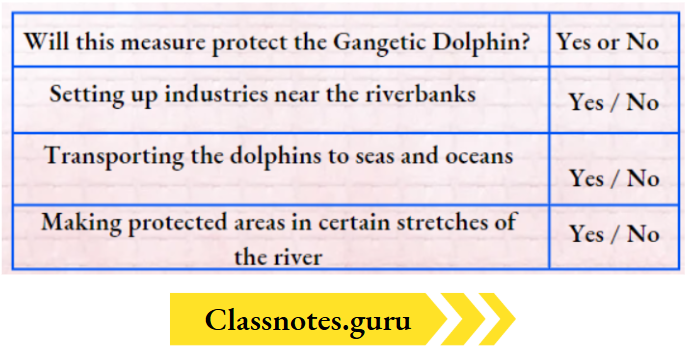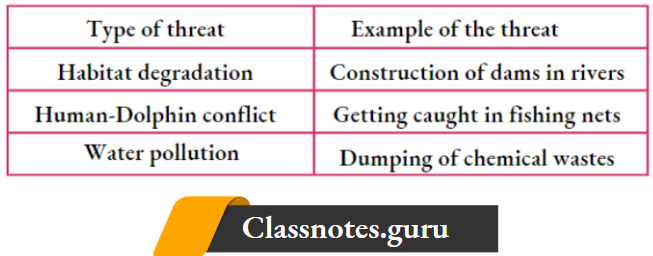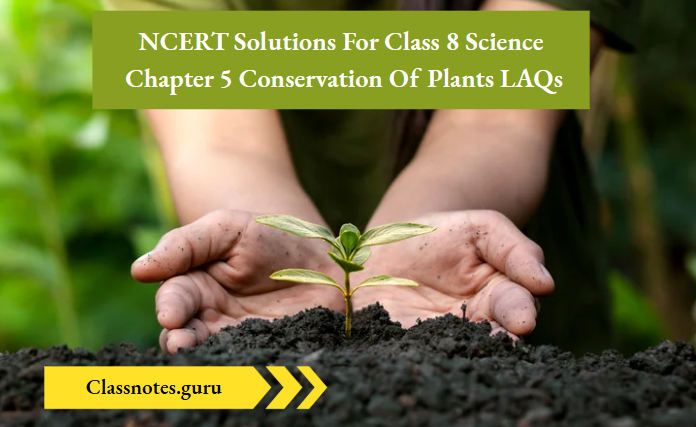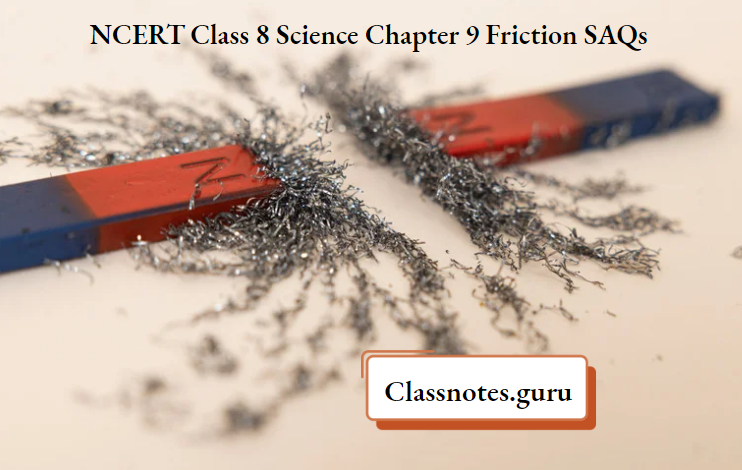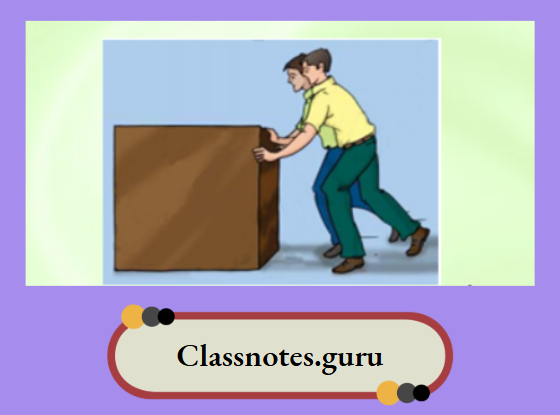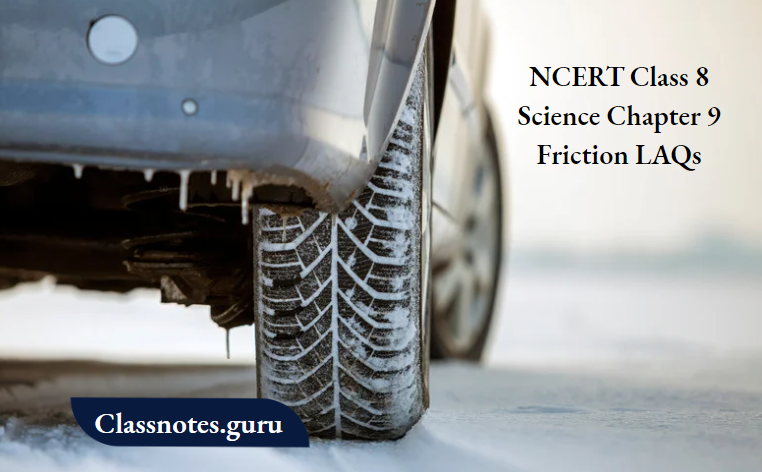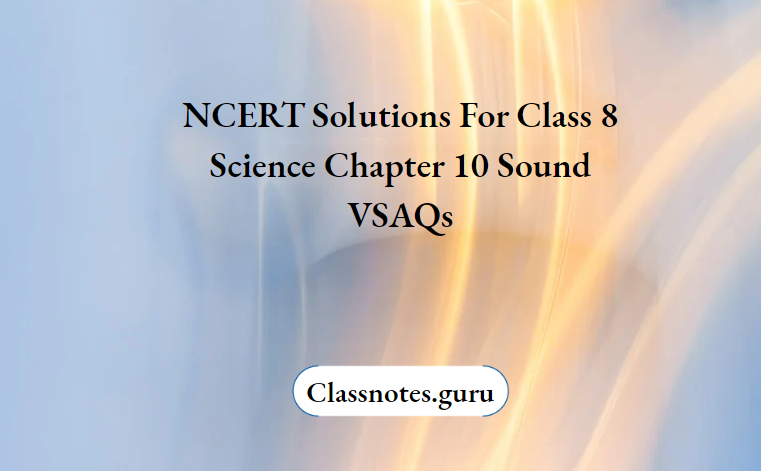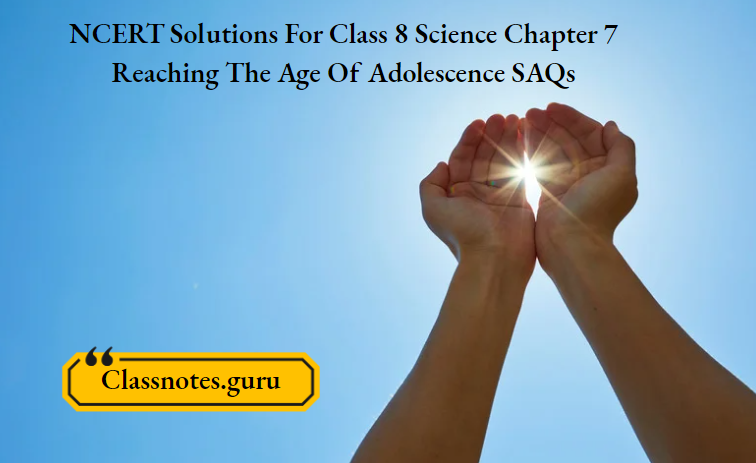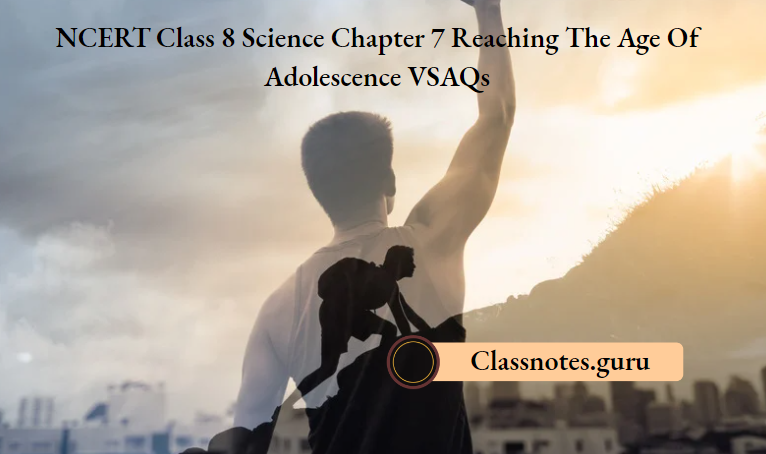NCERT Solutions For Class 8 Science Chapter 5 Conservation Of Plants SAQs
Question 1. Boojho wants to know if there is any permanent solution to the problem of deforestation.
Answer:
The permanent solution to the problem of deforestation is reforestation. It is the restocking of the destroyed forests by planting new trees.
Question 2. Difference between the following.
- Wildlife sanctuary and Biosphere reserve
- Zoo and Wildlife Sanctuary
- Endangered and Extinct Species
- Horn and Found
Answer:
1. The Difference between a wildlife sanctuary and a biosphere reserve is as follows:
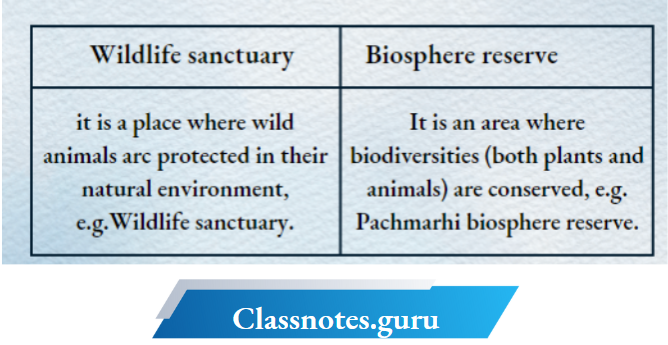
NCERT Class 8 Science Chapter 5 Conservation of Plants SAQs
2. Differences between the zoo and a wildlife sanctuary are as follows
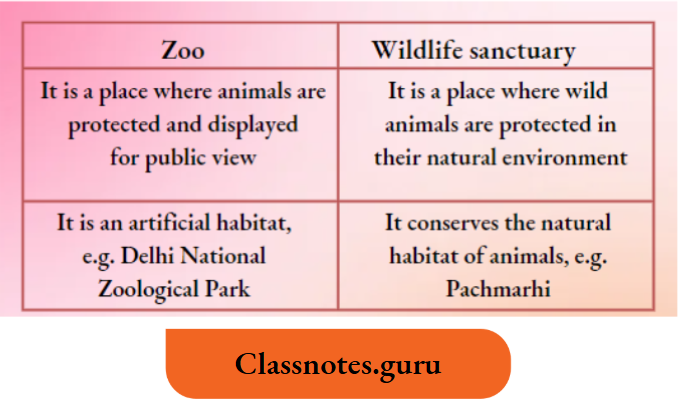
3. The difference between an endangered species and an extinct species is as follows

4. The difference between flora and fauna is as follows
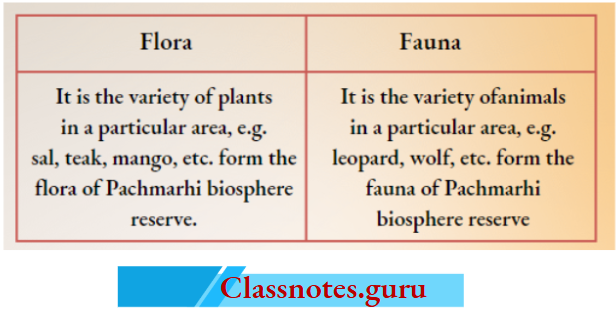
NCERT Solutions for Conservation of Plants Chapter 5
Question 3. Discuss the effects of deforestation on the following.
- Wild animals
- Environment
- Villages (rural areas)
- Cities (urban areas)
- Earth
- The next generation
Answer:
1. Wild animals:
Deforestation destroys the habitat of wild animals. This leads them to the danger of extinction.
2. Deforestation:
Increases the amount of CO2 in the environment, which increases the temperature. Due to this, the water cycle is disturbed, which may lead to drought. It also reduces the water holding capacity of soil, which leads to floods.
3. Villages (rural areas):
The lifestyle of villagers depends much on forests for wood, vegetables, fruits, meat, grass, etc. Deforestation leads their life to struggles for all of these. Also, their life become threatened by wild animals.

4. Cities (urban areas):
Deforestation causes drought, flooding, and environmental pollution, which affect the lives of people living in cities.
5. Earth:
The various gases on Earth, like water, oxygen, and carbon dioxide, are disturbed due to deforestation. It increases the temperature and pollution level on the Earth and is also the main cause of global warming.
6. The next generation:
The major effect of deforestation on the next generation is the limitation of natural resources like wood, oxygen, water, etc.
Conservation of Plants SAQs Class 8 NCERT Solutions

Question 4. What will happen if
Answer:
1. We go on cutting trees.
Answer:
If we continue cutting trees, then
- Many animals will lose their shelters.
- There would be a scarcity of materials like fruits, paper, which we get from forests.
- Floods and droughts will become more frequent.
- Earth will lose its most fertile layer and transform into a desert.
2. The habitat of an animal is disturbed.
Answer:
The habitat of an animal provides it with necessities such as shelter, food, and protection. If the habitat of an animal is disturbed, then it will be forced to go to other places in search of food and shelter. As a result, the animal could be killed.
3. The top layer of soil is exposed.
Answer:
Removal of the top layer of the soil exposes the lower, hard, and rocky layers. This soil has less humus and is less fertile. Gradually, the fertile land gets converted into deserts. It is called desertification.
Question 5. Answer in brief.
Answer:
1. Why should we conserve biodiversity?
Answer:
We should conserve biodiversity because every organism in nature plays an important role in balancing of natural system.
2. Protected forests are also not completely safe for wild animals. Why?
Answer:
Protected forests are not completely safe for wildlife because some local people kill animals on a large scale for their valuable skin, teeth, etc.
SAQs for Conservation of Plants Chapter 5 Class 8
3. Some trials depend on the Jungle. How?
Answer:
Some tribals depend on the jungle because they get most of their resource to live from the jungle, like shelter, wood, food, etc.
4. What are the causes and consequences of deforestation?
Answer:
The main causes of deforestation are the cutting of trees for wood and the use of land for industries and houses. Its consequences are flooding, drought, extinction of species, and many more harmful activities.
5. What is the Red Data Book?
Answer:
The Red Data Book is a source book that maintains an international list of all endangered animals and plant species.
6. What do you understand by the term migration?
Answer:
Migration refers to the movement of an organism or a group oforganisms from its natural habitat to another place at a particular time because of climatic change. Birds that cover long distances to reach another land are known as migratory birds.
Question 6. To meet the ever-increasing demand in factories and for shelter, trees are being continually cut down. Is it justified to cut trees for such projects? Discuss and prepare a brief report.
Answer:
The continuous cutting of trees is not justified for any project because it leads to deforestation, desertification, flooding, and danger to the lives of wild animals. It also disturbs the balance of nature.
Question 7. How can you contribute to the development of the green wealth of your locality? Mnko, n list of notions to be taken by you.
Answer:
We can contribute to the maintenance of the green wealth of our locality by taking these actions.
- Taking care of the plants and trees growing in or around the locality.
- Encourage people to plant more trees by informing them about the importance of growing trees.
NCERT Solutions for SAQs on Conservation of Plants
Question 8. Find out about the National parks in your state. Identify and show their location on the outline map of India.
Answer:
One of the National parks located near Delhi is the Jim Corbett National Park in Uttarakhand.
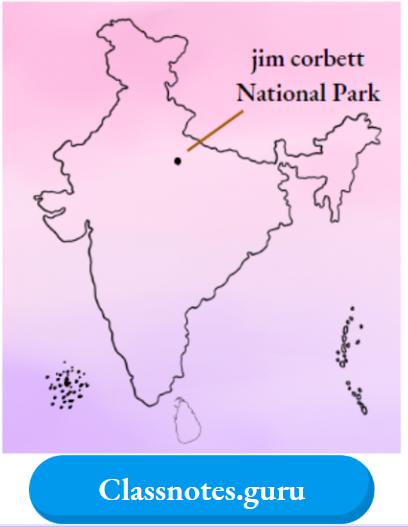
Question 9. Why should paper be saved? Prepare a list of ways by which you can save paper.
Answer:
Paper should be saved because it takes our important natural resource, i.e., trees, to make it (around 17 full-grown trees to make one tonne of paper). Trees, as we know, are important to maintain a balance in nature.
Therefore, to save trees and prevent the impact of their loss in the living world, we need to save paper. We can save paper by following these ways
- Paper should be recycled.
- Use both sides of a paper for writing purposes.
- Spread awareness regarding the value of saving paper.











